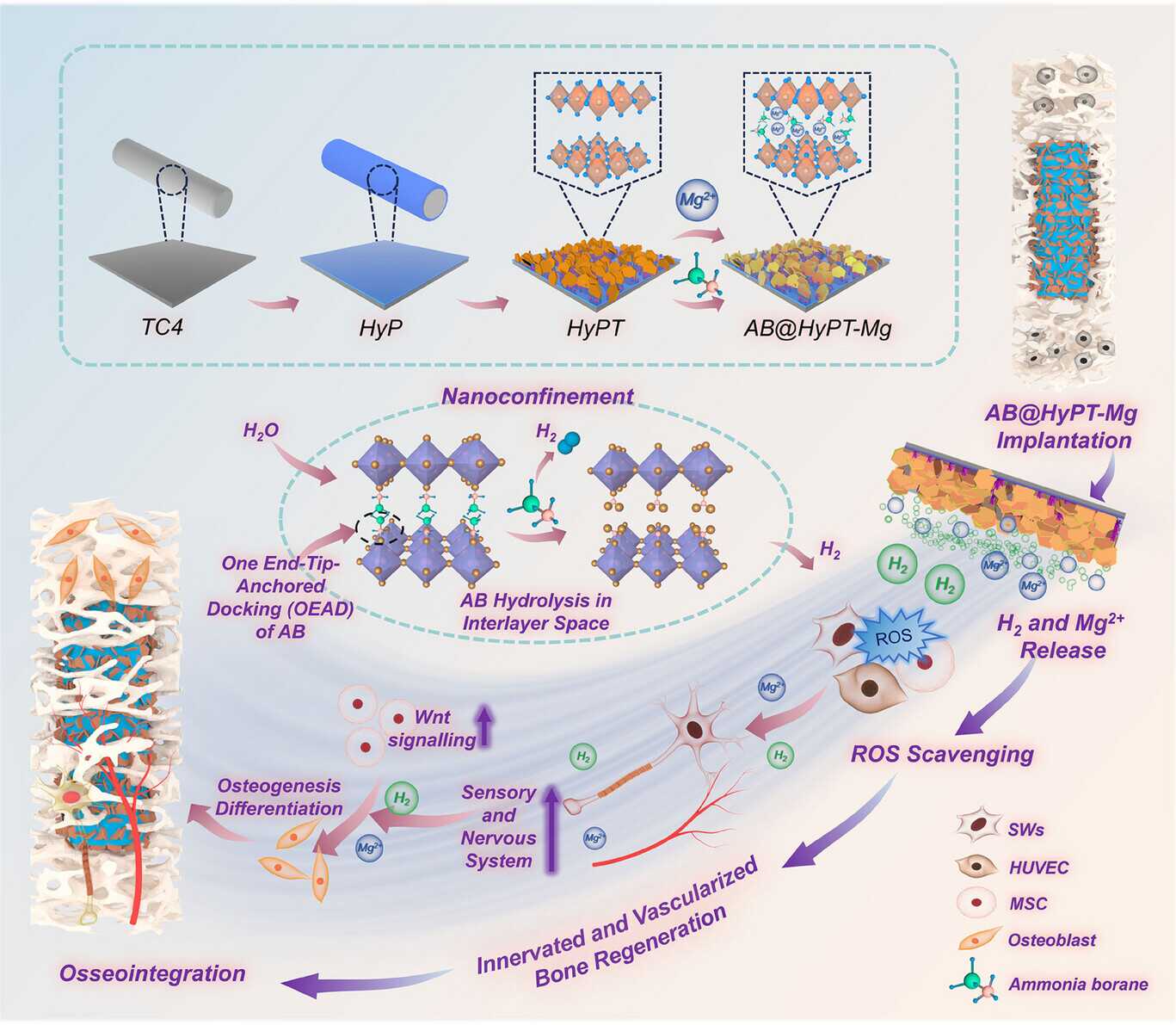
Revolutionizing Diabetic Bone Repair: Innovative Implant Delivers Sustained Hydrogen Therapy
Diabetes, a chronic metabolic disease marked by high blood sugar, is linked to complications that hinder tissue repair and immunity. Diabetic patients face significantly higher orthopedic implant failure rates, mainly due to hyperglycemia-induced inflammation, oxidative stress, neuropathy, and vasculopathy.
Molecular hydrogen (H2) has anti-inflammatory and antioxidant potential, but current delivery methods lack localized, sustained release and implant integration. Ammonia borane (AB), though high in hydrogen content, faces key challenges: uncontrolled hydrolysis causing toxic byproducts and gas embolism risk, plus cytotoxicity when reacting with hydrogen peroxide (H2O2)in inflamed tissues.
To address this challenge, a collaborative team led by Prof. WANG Guocheng from the Shenzhen Institutes of Advanced Technology (SIAT) of the Chinese Academy of Science, Prof. KONG Liang from Air Force Medical University, and Prof. ZHAO Xiaobing from Changzhou University, developed an innovative H2 delivery technology and H2-releasing titanium implant, allowing for controlled and sustained H2 release to facilitate bone repair in diabetic conditions.
The study was published in Advanced Materials on May 3.
In this study, the researchers developed a novel nanoconfinement strategy by first engineered a hybrid micro/nano-structured, oxygen vacancy-rich titanate nanocrystal coating (HyPT) on the surface of titanium alloy implant via plasma spraying and hydrothermal treatment. Magnesium ion (Mg2+)and AB were then sequentially loaded to construct the AB@HyPT-Mg composite coating.
The innovation of this study lies in the "one-end-anchored docking" (OEAD) mechanism, whereby AB molecules are anchored at one end within the titanate interlayers. This unique confinement effectively restricts AB release, allowing only water molecules to penetrate for gradual hydrolysis. As a result, sustained and controllable H2 release is achieving over an extended period of up to 11 days, while preventing AB molecule and their potential cytotoxic interaction with H2O2.
In vitro studies demonstrated that the coating effectively scavenged reactive oxygen species (ROS), upregulated antioxidant gene expression, and significantly promoted nerve regeneration, vascularization, and M2 macrophage polarization under high-glucose conditions. Notably, the sustained release of H2 synergized with Mg2+ ions, enhancing the regeneration of neuro-vascular networks and subsequently promoting the osteogenic differentiation of bone marrow mesenchymal stem cells.
In a diabetic rabbit bone defect model, AB@HyPT-Mg implants exhibited superior bone regeneration, accompanied by robust neural and vascular regeneration. Importantly, the technology also showed promising efficacy and biosafety in normoglycemic models, underscoring its broad therapeutic potential across diverse physiological conditions.
While existing nanoconfinement strategies approaches primarily focus on achieving rapid H2 generation from AB for energy-related applications, this study innovatively repurposes the approach to controlled and sustained hydrolysis within a biomedical implant delivery system, thereby addressing the key limitations of conventional H2 therapy. Furthermore, the study uniquely integrates the therapeutic effects of H2 and Mg2+, elucidating their synergistic mechanism in promoting "innervated-vascularized bone regeneration".
This work presents a transformative strategy for diabetic bone repair, showcasing the platform's potential and suggesting future applications in neural regeneration and anti-aging therapies through targeted co-delivery of H2 and therapeutic metal ions.

Schematic diagram illustrating the synergistic promotion of innervated-vascularized bone regeneration by AB@HyPT-Mg via sustained H2 release and controlled Mg2+ release, exhibiting a waterfall promotion effect. (Image by SIAT)
File Download:

